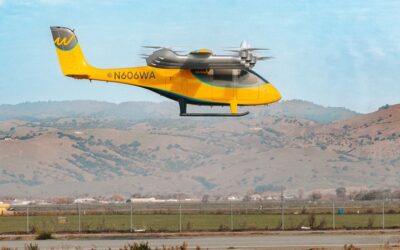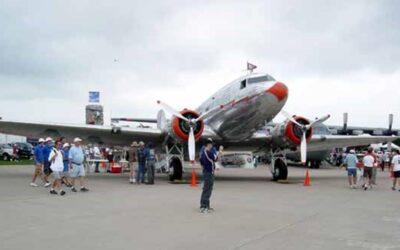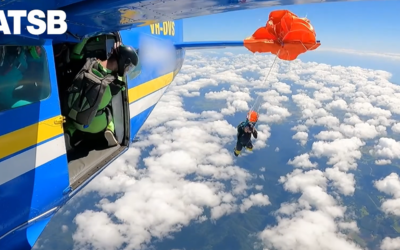
U.S. Department of Transportation Secretary Sean Duffy on Thursday unveiled plans for a new air traffic control system that it projects to be operational within three years.
DOT did not share the budget for the project, but the U.S. House of Representatives’ Transportation and Infrastructure Committee last week budgeted $12.5 billion to modernize air traffic control technology, which committee chairman Rep. Sam Graves (R-Mo.) called a “down payment.”
The aviation and travel industry for years has called for upgrades to the system, but an April 28 equipment outage in Philadelphia in which air traffic controllers responsible for Newark Liberty International Airport reportedly “temporarily lost radar and communications” with the flights for which they were responsible has spurred new urgency to replace the “antiquated” system.
The outage led to members of the ATC staff to take time off due to the trauma related to the event, according to the National Air Traffic Controllers Association, the controllers union.
The reduced staff contributed to significant delays and cancellations at Newark throughout last week and into this week. The airport is a hub for United Airlines, whose CEO, Scott Kirby, announced on May 2 that the carrier would reduce its schedule by 35 flights per day due to the persistent delays.
The outline of the new air traffic control system proposal details a sweeping overhaul to communications systems, surveillance systems, automation programs and facilities, including replacing 25,000 outdated radios, installing 4,000 new high-speed connections, replacing more than 600 radars, building six new ATC centers and replacing information display systems that were deployed in the 1990s with floppy disks and CDs, according to DOT.
“By replacing the current, antiquated system, the FAA will enhance safety in the sky, reduce delays, and unlock the future of air travel,” according to an agency statement.
“Decades of neglect have left us with an outdated system that is showing its age,” Duffy said in a statement. “Building this new system is an economic and national security necessity, and the time to fix it is now.”
The proposal stated that the outdated system is “putting the aviation sector at risk,” but immediately noted that “the [national airspace system] is safe. However, maintaining that safety will come at the expense of efficiencies as the FAA will be forced to throttle down air traffic as outdated systems suffer from outages.”
United’s Kirby also in a Wednesday statement made clear that “all the flights in and out of [Newark] are absolutely safe. When there are FAA issues—technology outages, staffing shortages, etc.—the FAA requires all airlines to slow down aircraft and/or cancel flights to maintain the highest levels of safety. … But when the FAA has technology outages or staffing shortages, it does lead to delays and cancellations for our customers and ‘that’s’ the issue we’re determined to solve for the long-term.”
Support from the travel and aviation industry for the proposed air traffic control system overhaul has been strong.
“This is a once-in-a-lifetime opportunity to finally get something done to stop the deterioration of our national airspace system,” Airlines for America president and CEO Nicholas Calio said in prepared remarks shared by the industry group. Calio spoke at the DOT announcement.
“Prior to President Trump’s administration, America’s leadership too often focused on fines and fees when it came to air travel,” U.S. Travel Association president and CEO Geoff Freeman said in a statement. “What Secretary Duffy announced today will benefit travelers and the broader U.S. economy.”
Jackson Shedelbower, executive director of the “government watchdog” Center for Transportation Policy, said in a statement that “in 2025, there’s no excuse for American air traffic controllers to be stuck using paper strips, floppy disks and decades-old radar technology. … Releasing the framework is just the first step. Now, it’s Congress’ duty to greenlight the necessary funding to put the plan into motion and deliver a golden era of air travel safety.”
The Modern Skies Coalition, which is composed of more than 50 aviation industry-related organizations—including the Global Business Travel Association, the American Society of Travel Advisors, the U.S. Travel Association and A4A—in a statement said it was “pleased that the Secretary has identified the priorities of what must be done to maintain safety and remain a leader in air navigation services. … Recent issues—especially those at [Reagan Washington National Airport] and [Newark]—remind us of the urgent need for a sharp focus on the safety and efficiency of the National Airspace System and the dire necessity to address antiquated technology and the staffing shortage.”
Recent Posts
- Wisk Aero completes first flight of gen. 6 autonomous eVTOL in California
- Douglas DC-3 90th Anniversary Broadcast Series Brings Global Community Together to Celebrate a Flying Legend
- Bombardier to send 6 Global 6500 to Canadian Air Force
- Daher Kodiak 900 aircraft receives Brazilian airworthiness certification
- Jim Richmond Backcountry Aviation Foundation announces Mustang flight as raffle prize







Recent Comments